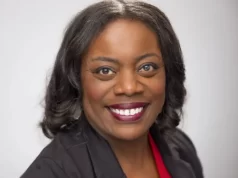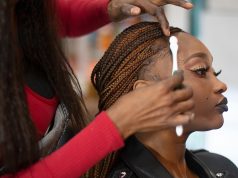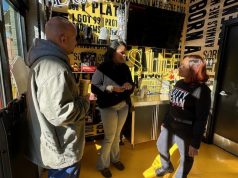As a fashion designer and merchandiser on Seventh Avenue in New York for over 30 years, now working with prom dresses in stores throughout the country, I am affected to see the prom dresses debuting this year. Yes, every year there are perennial favorites and new trends, including “sheerness,” “Grecian looks,” and “chiffon overlays,” and this season’s interest in peplums: a short, full flounce on a dress or gown below the waist, which flairs out.
But whatever the trends, I am impelled to share what I have seen time after time — and this never changes. As a girl makes the choice to buy a particular prom dress, that dress — in its structure, design and color — meets a deep hope in her. This hope is explained by Aesthetic Realism, the education founded by poet and philosopher Eli Siegel, and this principle: “All beauty is a making one of opposites, and the making one of opposites is what we are going after in ourselves.”
A teenage girl can feel mixed up about the opposites in herself. She wants to affect people and be admired, yet she hopes also to feel she is yielding and kind. What has this to do with a prom dress? Take a popular item in our prom collection. As its angular V-neckline covered with metallic sequins meets the soft, lightly gathered charmeuse on the bodice, it draws attention. Many young women have loved it. A girl can feel confused about hardness and softness in herself. What are some of the opposites that affect a girl in this dress? Does this the V-shaped neckline make for excitement in a girl because of the way hardness and softness, the strict angle and lively sequins work together for one beautiful purpose? And in another style, can a peplum, when it’s constructed well, be both tight and loose, inward and outward, snug and expanding, and give a girl a feeling of gaiety and seriousness at once?
As many young women attend their proms, they and others will be affected by opposites in each dress, which can explain why one is cared for over another, and can give them the opportunity to see themselves and others more deeply and with pride.
Bruce Blaustein, is a consultant on the faculty of the Aesthetic Realism Foundation, presents papers in public seminars on many subjects, including fashion. His writing on the family and on the economy has appeared in major newspaper around the country.




